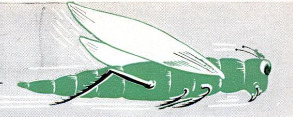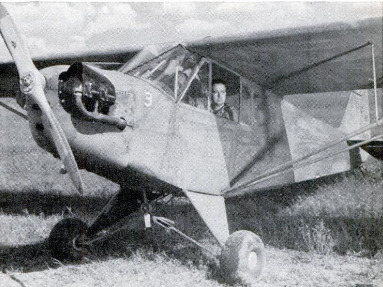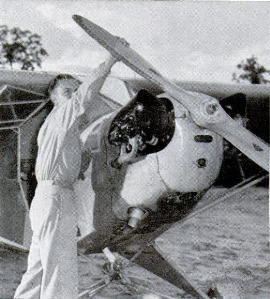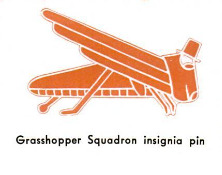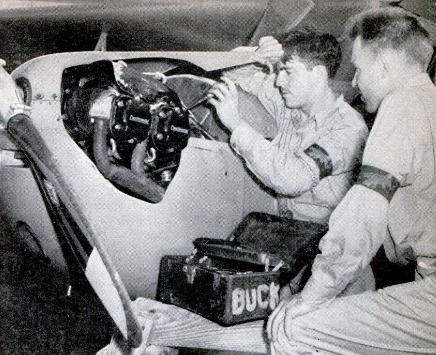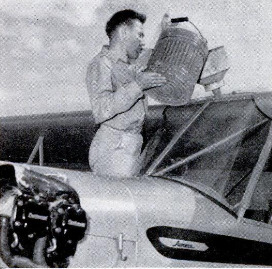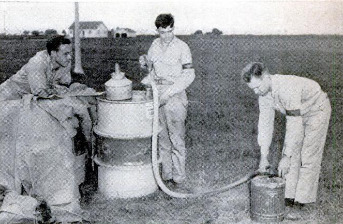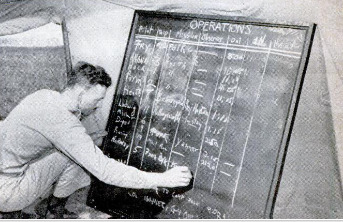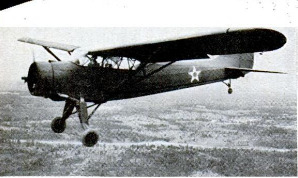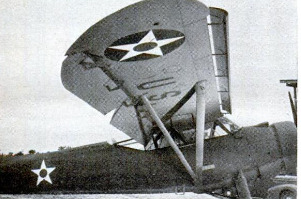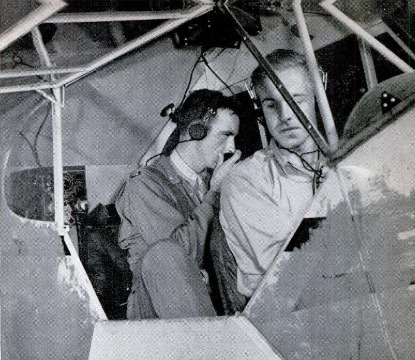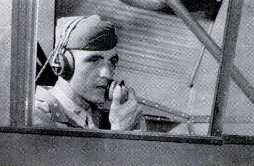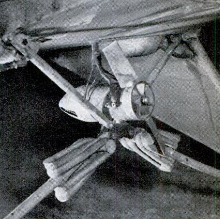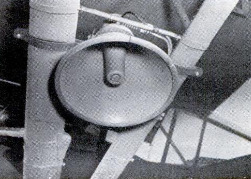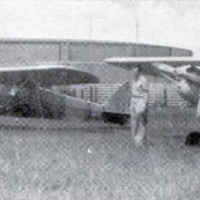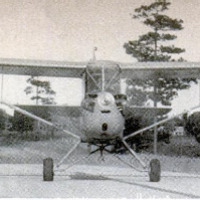-
Title (Dublin Core)
-
Grasshoppers: that's what the army calls its new odd job planes
-
Article Title and/or Image Caption (Dublin Core)
-
Title: Grasshoppers: that's what the army calls its new odd job planes
-
extracted text (Extract Text)
-
THE latest innovation in Army airplanes
is not a fast pursuit or a heavy bomber,
or anything else you would think of as
a military ship. It is that type of light
sportsman’s plane which, in bright hues of
yellow, blue, or red, has swarmed so increas-
ingly around the pasture-lot flying fields in
recent years—our familiar friends the Piper
Cub, the Taylorcraft, and the Aeronca.
The Army calls it a grasshopper, and it is
simply the stock-model tandem trainer of
these common commercial
planes. In its own way the
grasshopper is almost as
exciting and useful a mili-
tary newcomer as the ban-
tam car, the jeep, has
been. This flying jeep won
its spurs with the cavalry
last summer, and then in
the autumn gave such
service with the artillery
and the infantry that it
now seems to be slated for
permanent enlistment in
the armed forces of the United States.
Its use is for command-control message
carrying, observation, traffic direction, taxi,
and general-utility work—directly with
troops, behind the lines, wherever there is
a little field or open road for landing, where
bullets are not flying.
It is already in mass production, commer-
cially. This growing industry made 6,000
planes in 1940, and says this figure can
easily be doubled. Almost any enlisted man
can be trained to fly one in a few hours, and
thousands of qualified pilots are in the Army
already.
Striking power is only one of the things a
general has to worry about. Today's army
units move so fast, maps change so rapidly,
that it becomes a major problem for the
commanding officer to know where his
troops are—even before they have reached
the zone of combat. Roads and radio chan-
nels become jammed and bogged.
One obvious answer to this is the light
liaison airplane, able to take off and land on
a pocket handkerchief, able to fly so slow
and so low that messages and orders can be
shouted to troops on the ground—a hedge-
hopping plane for the Army's back yard.
Such a plane would be of little use on an
actual battlefield, for it can easily be
knocked down by small-arms fire, but for
work behind the lines it is invaluable.
Three specially designed planes of this
type, built by Bellanca, Ryan, and Stinson
to embody principles developed in Germany,
were put into service with the Army this
year, and quickly showed their usefulness.
With large wings, equipped with flaps and
slots to increase buoyancy at low speed,
these liaison-observation planes can perform
marvels—land and take off in about 250
feet, maintain flight at little more than 20
miles per hour. Against a brisk breeze they
can hover, almost stationary, over one spot.
But hardly had these special jobs made
their debut when they ran
into competition. The
small-plane manufacturers
bobbed up with the auda-
cious notion that their lit-
tle stock models could do
the same job just about as
well—and could be deliv-
ered, complete with two-
way radio, for less than
one tenth of the cost.
Meanwhile Bellanca, Ryan, and Stinson
might be building real military planes.
Led by the Piper Aircraft Corporation,
they proposed to give a demonstration of
their products. And so a special civilian
squadron was organized, of nine Piper Cubs,
two Taylorcraft, and two Aeroncas, to serve
during the summer in Army maneuvers in
Tennessee and Texas. The Grasshopper
Squadron, as it came to be known, was so
successful that the Army rented the planes
and hired the pilots for the autumn maneu-
vers in Louisiana. Meanwhile the Air Corps
purchased a number of the planes for testing.
The cavalry maneuvers in Texas were in
rough sand-dune country, covered with an
eruption of hummocks and hillocks. But a
single bulldozer, in 2 1/2 hours’ work, had
cleared a landing field good
enough for the grasshop-
pers. One of the lightplanes
washed out its landing gear
on a sand dune. It was back
in the air again in an hour
and 20 minutes, at cost of
$20 for repairs.
The field-base equipment
of the Grasshopper Squad-
ron was so simple that it
was almost ridiculous. It
consisted of a tent, a
small blackboard for an
operations chart, a couple
of boxes of spare parts,
and a poker table. The
ground crew consisted of
one mechanic, whose en-
tire tool kit was about
the dimensions of a man-
size dinner pail. It
needed no supply train
for aviation gasoline; it
poured in its fuel from a
five-gallon can, the same
gas that was used for
driving the Army trucks.
The squadron got its name in a tense mo-
ment of maneuvers one day when Maj. Gen.
Innis P. Swift, commanding the 1st Cavalry
Division, suddenly was seized with an urgent
desire to see more of his terrain than was
apparent from a staff car or the back of a
horse, or from the somewhat fragmentary
radio messages that were coming in.
“Get me one of those grasshoppers!” cried
the general. And within a few minutes he
had it, from the squadron's near-by flying
base. And the squadron men did not neglect
to notice that an Army radio message, noti-
fying the general that the plane was on the
way, did not arrive until 20 minutes after
the plane was on the job.
The general's happy description of the
little planes was immediately taken up by
the flyers themselves. They painted
green grasshoppers on their fuselages.
They had pins made up, showing a
comic little green grasshopper in a silk hat.
One of the proudest wearers of this Grass-
hopper Squadron insignia is Lieut. Col. T. H.
Kerschner, assistant chief of operations, G-3,
Third Army. Both as chief umpire and chief
of operations during Army maneuvers, he
used a grasshopper plane continually. Often
he completed an errand in a few hours,
which otherwise would have taken all day,
blocked in crowded roads or slogging around
in mudholes.
The piney woods country of Louisiana is
sparsely populated wilderness, but here and
there on the gravel country roads is an
isolated store, with a stock mainly composed
of canned goods, candy bars, soft drinks,
chewing tobacco, and snuff. More than one
backwoods proprietor of such an emporium
was startled during August and September,
by the apparition of an airplane outside his
front door by the gasoline pump. It was just
Colonel Kerschner stopping to refuel!
Almost every officer who has used a
grasshopper or seen it in operation is an
enthusiast for it. One Air Corps lieutenant
put it this way:
“I've been flying a Stinson 0-49, the new
liaison plane, and it is a sweet plane at
the job it was designed for. But the
grasshopper can do almost anything
the 0-49 can do, and more besides. I can fly
a little faster and a little slower, and the
grasshopper needs about half again as much
distance for landing and take-off. But it
doesn’t need to land in a small field, because
it can land on a narrow road. Its wing
spread is only 37 feet. Mine is 51 feet, which
is a lot of difference when you're figuring on
the width of a road.
“Also, the grasshopper weighs only 800
pounds unloaded. A pilot can land on a
road, and drag the plane off to hide it in the
bushes, all by himself. You can’t do that
with an 0-49. It weighs nearly four times
as much.”
A more specific description, drawn up by
a proponent of the grasshoppers, is given in
an accompanying table. None of this, of
course, is to be taken as a knock at the 0-49,
which was built to high military specifica-
tions and has given splendid performance in
the tasks assigned it. Lieut. Gen. Walter
Kreuger, commanding the Third Army, used
one continually during the war games for
personal transportation and for watching
his troops in the field. With a loudspeaker
fastened under a wing, the Provost Marshal
found an O-49 very useful
in directing convoys on
congested roads.
The appearance of the
grasshoppers with the
Army immediately called
forth a flood of letters
from selectees with pilot's
licenses, who would prefer
flying to continuance as
infantry privates. One
thing that seizes the im-
agination of enthusiasts
about the lightplanes is
that it doesn't take much
training to fly them. They
foresee lightplanes, piloted
by noncommissioned offi-
cers, operating with
ground units, on practical-
ly the same basis as a
truck or a command car.
But one thing is settled.
Ground officers who have
worked with grasshoppers
want grasshoppers. And
when the troops want an
item of equipment, in these
days, they generally get it.
HICKMAN POWELL.
-
Language (Dublin Core)
-
Eng
-
Date Issued (Dublin Core)
-
1942-01
-
pages (Bibliographic Ontology)
-
63-67
-
Rights (Dublin Core)
-
Public domain
-
Archived by (Dublin Core)
-
Sami Akbiyik
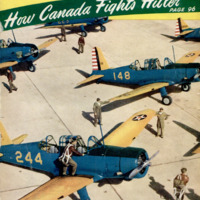 Popular Science Monthly, v. 140, n. 1, 1942
Popular Science Monthly, v. 140, n. 1, 1942

